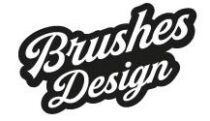This post is also available in: Español (Spanish) Português (Portuguese (Brazil))
Have you ever seen a logo, a color, or a font and instantly recognized the brand? That’s not a coincidence: it’s the power of a well-built visual identity graphic design. In this article, we’ll explore everything from the basics to advanced strategies so you can understand how it works and how to apply it to your business or project.
What is Visual Identity Graphic Design?
Visual identity graphic design is the discipline of creating and organizing all the graphic elements that make a brand recognizable. It’s not just about a logo: it includes colors, typography, photography styles, illustrations, iconography, and even how content is presented on social media.
In other words, it’s the “face” of your business. It builds trust, communicates your values, and sets you apart from the competition.
Practical Example:
Coca-Cola: red, unique cursive typography, freshness, and joy.
Apple: minimalist white, bitten apple icon, sophistication, and premium technology.
Key Elements of Visual Identity
1. Logo
The heart of visual identity. It can be typographic, iconic, or a mix. It should be simple, memorable, and adaptable across formats.
2. Color Palette
Colors convey emotions and meanings. For example, blue communicates trust (commonly used by banks), while green is associated with nature and sustainability.
3. Typography
Fonts say a lot about a brand. A sans serif font communicates modernity and minimalism, while a serif font conveys elegance and tradition.
4. Imagery and Photography Style
Do you use clean, minimalist photos or natural, spontaneous scenes? Consistency is what makes your brand recognizable.
5. Iconography and Graphics
Small details like icons or patterns that reinforce the brand identity.
Benefits of Investing in Strong Visual Identity Graphic Design
Instant recognition: customers identify you right away.
Trust and professionalism: a well-crafted brand conveys credibility.
Differentiation: stand out in a crowded market.
Consistency: from your website to your social media, everything speaks the same visual language.
Emotional impact: connect with your audience’s emotions.
How to Build Your Visual Identity Step by Step
Step 1: Define Your Brand
Before designing, answer these: What values do I want to communicate? Who is my audience? What emotions do I want to evoke?
Step 2: Research Your Competition
Look at how similar brands present themselves. Not to copy, but to spot opportunities for differentiation.
Step 3: Create a Moodboard
A visual board with images, colors, and styles that capture your brand’s essence.
Step 4: Design the Visual Elements
This is where creativity comes in: logo, color palette, typography, imagery, and patterns.
Step 5: Document Your Identity
A brand manual is key. It explains how to use visual elements to ensure consistency across all platforms.
Common Mistakes in Visual Identity Graphic Design
Constantly changing styles: confuses your audience.
Choosing colors based only on personal taste: instead of color psychology.
Overcomplicating the logo: less is more.
Ignoring digital adaptation: your identity must work across all screen sizes.
Success Stories: Brands That Master Their Visual Identity
Spotify
Characteristic green and sound wave graphics.
Flexible identity, yet always consistent.
Nike
Iconic swoosh logo that conveys movement.
Bold typography and slogans reinforcing their athletic DNA.
Starbucks
Green + mythical siren.
Consistent visual experience in stores, packaging, and digital channels.
Advanced Strategies to Boost Your Visual Identity
Multichannel Branding
Your visual identity must be designed for websites, social media, print, video, and presentations. Consistency across all channels is key.
Visual Storytelling
It’s not just about pretty images. Every element should tell a story. For example, custom illustrations instead of stock photos create greater authenticity.
Global Adaptability
If you want to scale your brand, your identity must adapt to different cultures and languages without losing consistency.
Integration with Digital Marketing
Visual identity should align with advertising campaigns, SEO, and social media presence. This strengthens brand recall.
Useful Resources and Tools
Canva: perfect for beginners.
Adobe Illustrator & Photoshop: professional tools.
Coolors: generate color palettes.
Behance & Dribbble: inspiration from designers worldwide.
Internal and External Links
Conclusion: Your Visual Identity is Your Superpower
Visual identity graphic design is not a luxury, it’s a strategic necessity. Investing in a solid identity helps you stand out, build trust, and attract the right clients. Whether you’re starting a business or refreshing your brand, remember: visual consistency is what transforms simple design into an unforgettable brand.
Are you ready to build the visual identity your brand needs?
